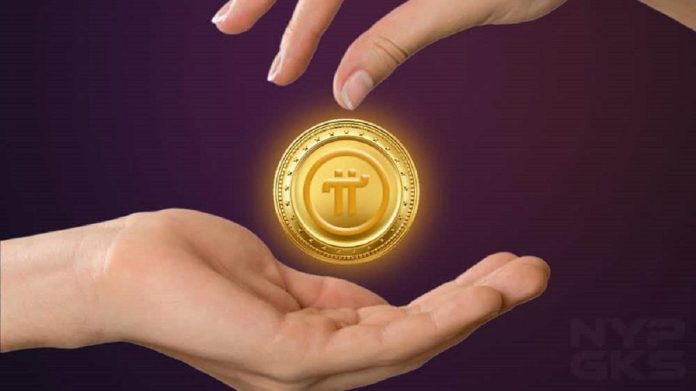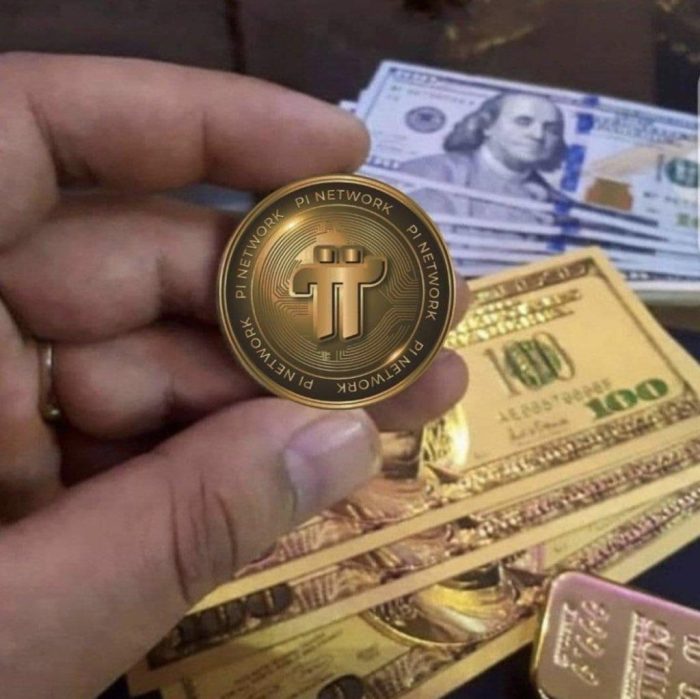
The idea of mining cryptocurrency from your phone—without hardware, technical know-how, or cost—sounded too good to be true when Pi Network launched in 2019. Yet, over 60 million people around the world downloaded the app, tapped the “mine” button daily, and earned Pi coins for their participation.
Now, in 2025, with the launch of its open mainnet and availability on live exchanges, Pi Network is no longer just an idea or experiment. It’s evolving into a full-fledged blockchain ecosystem. But a critical question remains: Is Pi real money?
This article breaks down the facts, answers the big questions, and provides everything you need to know about whether Pi is on the path to becoming a true, spendable, and valuable currency.
What Is Pi Network?
Pi Network was developed by a group of Stanford PhDs with a mission to make cryptocurrency accessible to everyday users. Launched on Pi Day (March 14) in 2019, the project quickly attracted millions thanks to its easy-to-use mobile mining app, zero upfront costs, and referral-based growth system.
Unlike Bitcoin, Pi doesn’t require users to solve energy-intensive mathematical problems. Instead, users validate their identity, tap a button once every 24 hours, and build “security circles” of trusted users to help maintain the network. This approach not only lowers barriers to entry but also aims to create a more human-driven security model.
The Pi Network app functions as a wallet, mining interface, and social platform. Over the years, the platform has added Know Your Customer (KYC) verification, role-based participation (such as Contributors and Node operators), and a growing testnet ecosystem leading up to its full blockchain launch.
How Pi Network Works
Pi uses a unique adaptation of the Stellar Consensus Protocol (SCP), a federated consensus mechanism that relies on “trust anchors” instead of the traditional proof-of-work or proof-of-stake. This makes it lightweight and energy-efficient—ideal for mobile devices.
Key participant roles include:
- Pioneers: Regular users who mine by confirming they’re active each day.
- Contributors: Users who build “security circles” by adding trusted individuals, enhancing the network’s integrity.
- Ambassadors: Participants who bring in new users and grow the network.
- Nodes: Advanced users who run Pi’s node software on desktop machines and contribute to consensus.
The system encourages engagement while keeping energy consumption low, which contrasts sharply with networks like BTC USDT that demand heavy computing power. This also means Pi mining is inclusive—it works on nearly any smartphone and doesn’t require investment.
Is Pi Coin Real Money Right Now?
The status of Pi as “real money” depends on how we define it. Real money typically must meet several criteria: it should be tradable, hold recognized value, be accepted for goods and services, and function on a secure and decentralized system.

As of 2025, here’s where Pi stands:
- Tradability: Pi is now tradable on select cryptocurrency exchanges.
- Mainnet Status: Pi launched its open mainnet in February 2025, marking a critical milestone.
- Monetary Value: The price of Pi is now determined by market forces, though it remains volatile and speculative.
- Spendability: There are still limited opportunities to use Pi for everyday purchases.
In short, Pi is partially there. It meets some key criteria—particularly now that it trades on real markets and supports deposits and withdrawals—but it’s not yet fully embedded in the crypto economy or retail landscape.
Key Milestones: From Launch to Mainnet
Understanding Pi’s potential requires a look at its development timeline:
- 2019: Pi Network is launched on Pi Day. The app attracts early adopters and rapidly grows through referrals.
- 2020–2022: Millions join. Pi introduces KYC verification and expands its infrastructure.
- 2023–2024: Pi Testnet matures, while the Core Team prepares for mainnet migration and ecosystem applications.
- February 20, 2025: Pi launches its open mainnet, allowing users to migrate balances, trade Pi, and interact with blockchain apps.
The open mainnet allows users to transfer their Pi, use decentralized applications, and trade on exchanges that support the native coin. This is the most significant step toward Pi becoming a usable, market-driven digital currency.
Where to Buy and Sell Pi Coin
As of 2025, MEXC Exchange is the most prominent and trusted platform for trading mainnet-native Pi coins.
Trading Pi on MEXC
Founded in 2018, MEXC has grown into a global exchange powerhouse, now serving over 36 million users across more than 170 countries. It ranks among the top exchanges by volume, thanks to aggressive liquidity strategies and competitive trading fees.
On MEXC, users can trade Pi in popular pairs such as PI/USDT. The platform supports direct deposits and withdrawals of Pi tokens from the mainnet, which means users can move real Pi coins—not IOUs or placeholders—between the Pi Network app and their exchange wallets.

MEXC provides:
- Spot Trading Access: Buy or sell Pi with stablecoins or fiat-backed pairs.
- Low Fees: Maker fees at 0% and taker fees at 0.05% for spot trading.
- Liquidity: MEXC boasts over $2.3 billion in daily spot volume, providing strong liquidity for large orders.
- Security and Transparency: The exchange runs bi-monthly Proof of Reserves audits and uses a hybrid cold-hot wallet storage model.
To get started, users simply register on MEXC, verify their identity, and transfer Pi from their Pi Network wallet. The interface is clean and beginner-friendly, making it accessible for both newcomers and seasoned traders.
Arguments For and Against Pi as Real Money
Strengths of Pi
- Massive Adoption: Over 60 million users globally, many of whom are KYC-verified and have migrated to mainnet.
- Free to Join and Use: No upfront investment required; mining is entirely mobile-based.
- Mainnet is Live: The blockchain is operational, with real coins being transferred and traded.
- Exchange Access: Platforms like MEXC now fully support real Pi trading with live market pricing.
- Eco-Friendly: Minimal energy consumption makes Pi one of the greenest blockchain solutions.
Limitations of Pi
- Limited Exchange Listings: As of now, Pi is only available on a small number of platforms.
- Merchant Utility: There are few real-world outlets accepting Pi for goods or services.
- Decentralization Concerns: Validator control remains largely with the Pi Core Team.
- Liquidity Risks: Market depth is growing, but not yet on par with major coins like ETH or SOL.
While Pi shows serious promise, the transition from speculative asset to “real money” will require more infrastructure, widespread adoption, and decentralized governance.
What Needs to Happen for Pi to Become Real Money
For Pi to become more than a tradable asset and fully enter the realm of functional currency, several developments must occur:
- Broader Exchange Listings: Listings on major centralized exchanges would improve visibility and deepen liquidity.
- Real-World Use Cases: Pi must be accepted as a payment method across apps, websites, and point-of-sale systems. Merchant adoption will be key.
- Ecosystem Expansion: A vibrant decentralized application (dApp) landscape—including games, wallets, DeFi tools, and NFTs—will drive demand and usage.
- Governance and Decentralization: Pi needs to move toward a more decentralized validator structure, reducing reliance on the core team.
- Regulatory Clarity: Clear guidelines and compliance efforts will help Pi gain credibility and survive future legal scrutiny.
- Economic Stability: As more users trade and spend Pi, a stable and market-determined valuation will help it function as a reliable medium of exchange.
Verdict: Is Pi Real Money Yet?
Pi Network has come a long way from its early concept of app-based mining. With the open mainnet launch, exchange listings, and real user participation, it’s no longer just a theory—it’s a functioning blockchain with its own economy.
Still, “real money” implies widespread recognition, usability, and exchange power. Today, Pi is a real digital asset with value, but not yet a full-fledged currency. It’s tradeable, transferable, and usable within a limited ecosystem. Whether it becomes the next major crypto or stalls out depends on what happens next.
If you’re already in the Pi ecosystem, now is the time to:
- Complete your KYC if you haven’t.
- Migrate your balance to the open mainnet.
- Learn how to trade and manage your Pi on supported platforms like MEXC.
- Stay updated on developments around apps, dApps, and new use cases.
If you’re new to Pi, approach it with measured curiosity. The network is free to join, relatively low-risk, and offers exposure to a grassroots crypto movement with serious ambition.
Ultimately, Pi’s success will hinge on its ability to deliver value, trust, and real-world utility. And while it’s not fully “money” yet, it’s closer than many once thought possible.

